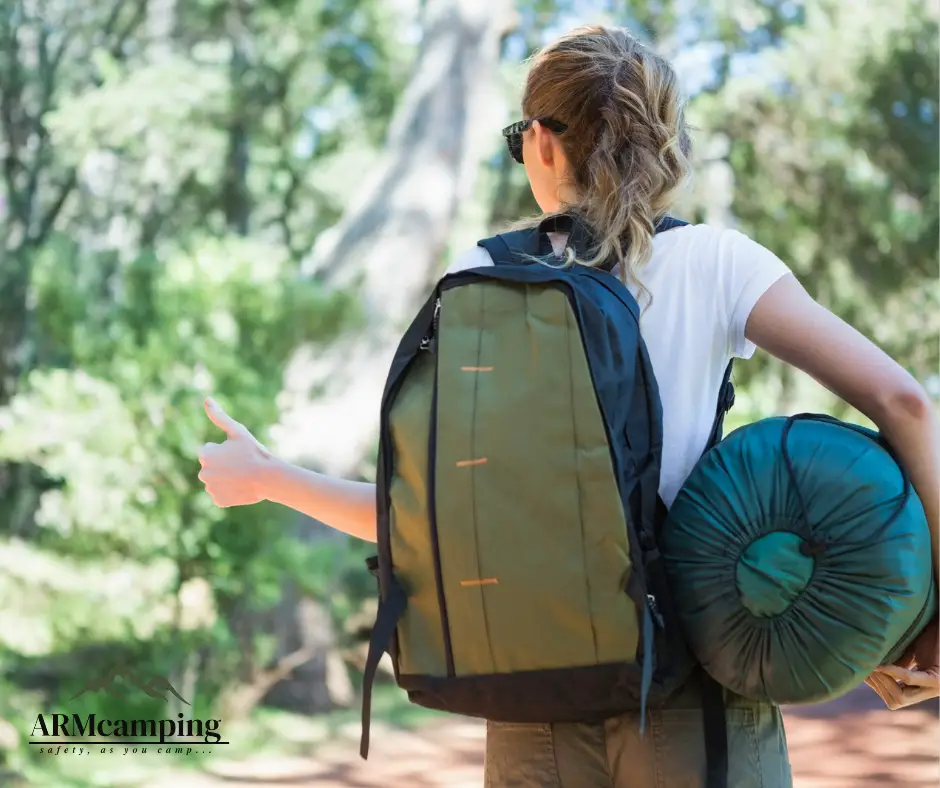
You can pack for as long as your trip takes. New down bags come compressed in their bags and they do just fine until you are ready to use them.
Asking this question means you are afraid your down bag might clump if you leave it compressed for too long. However, too long is a relative time frame that depends very much on your circumstances or that of your trip.
Meanwhile, what happens if you leave your down bag compressed for too long? How can you prevent unnecessary compression? Read this article for more information on this.
How Long Should Down Bag Compress?
Table of Contents
The difference between a down bag and a synthetic one is that down bags clump easier. This is because the feathers in down bags are natural ones while the ones in synthetic bags are—well, synthetic.
For this reason, you have to be conscious of how long you leave your down bag compressed. To illustrate how long you can leave down bags compressed, consider these scenarios.
When It’s Fresh From The Store
Say you have just purchased your bag from the shop but your trip is months away, should you be worried about compression? No, on the contrary, until such time when you need to use the bag, it can remain compressed. This is as long as nothing heavy is sitting on the bag.
The bag will decompress when you need to use it if you store it properly. Avoid the following:
-
Moisture
Keep the bag away from windows and vents where moisture can reach it. Keep it in a well-ventilated place, or hang it so that it dangles free. Keep it away from high temperatures.
-
Unnecessary Compression
Do not place something heavy on the bag. This will compress it even further and may cause clumping. The only compression that a down bag need is the one in its sack or ivy.
When You’re On The Road
It’s a given that you have to pack your sleeping bag with your other stuff in your backpack. This will lead to a degree of compression. It is unavoidable. This compression doesn’t have any adverse effect on your bag.
Your sleeping bag can stay compressed this way in your bag for days and it would still be alright. Moreover, if you are driving a vehicle, your sleeping bag may not be stuffed in a backpack with other things.
Traveling with your sleeping bag in your backpack doesn’t cause a compression that your bag can’t come back from.
What Happens If You Leave Down Bags Compressed For Longer Than Necessary?
The loft in your bag will lose its buoyancy when you leave it compressed for too long. The loft is the puffiness in down bags. The puffiness in turn is caused by the feathers in the insulator. Let’s break this down simply below:
Loss of Loft
Compressed for too long, your down bag—or any sleeping bag type—will lose much of the loft in the insulator. You can experiment with this with a bunch of bird feathers.
Keep the bunch compressed under some books for hours and then try to bring them back to their original state. The barbs in the feathers split or bend.
The same thing happens with the feathers in down bags. They lose that airy feeling you get when you sleep in them and become flattered.
It Weakens Its Warming System
This is a direct result of the loss of Loft in your down bag. The warming system of your bag includes the loft, the shape of the bag, the fluffiness, and even the hood if your bag has one.
If one of these components is lost in the warming system of your bag, the whole thing is jeopardized. Your bag will lose its full ability to provide warmth when you sleep in it.
Cold Spots Are Created
This is also a direct consequence of the loss of the ability to warm you. Sometimes the bag doesn’t lose all its ability to do this. If the down clumps, only areas of the clump are warm, leaving the areas where down has moved away from.
So you can be in your down bag and feel cold around your feet if the insulator is missing feathers in that area.
How can you prevent unnecessary compression?
You can prevent unnecessary compression by practicing proper storage, whether you’re on the road, or driving. Or even after hiking. Here are tips that can help:
Remove the Bag From The Sack
Don’t leave your bag in the sack. Doing this gives you the chance to take a second important look at the state of the bag. You may have missed something earlier in your trip.
Or while on your way back, someone or you, may have spilled some fluid into the sack. Whatever you missed, you now have the opportunity to correct it when you remove the bag from the sack.
Dry The Bag
Even if you find no spillage of fluid or any noticeable moisture, dry the bag. Do this by hanging it on the line in the sun. You can use a clothespin to hold it on. Any hidden moisture will dry off. Sleeping bags are generally thick so give it plenty of time to dry by turning it over as needed.
Store It In A Mesh Sack
When the bag is thoroughly dry, loosely store it in a mesh bag. A mesh bag is ideal because it is breathable, and will not allow a buildup of moisture. Beware though not to use a mesh bag that’s infested with bugs as this can lead to penetration of your bag by bed bugs.
Store In A Dry Airy Place
Next, store the bag in the mesh in a cool place in your home. Avoid any place where moisture is likely to build up. Avoid direct sunlight too. Do not place something heavy on the bag while in storage.
Consider Airing Your Bag Periodically
This is something most campers don’t do. After a camping trip they follow all the tips on this list except this one. Maintenance of your bag is critical if you want to continue to enjoy using it. You can air it three times a month, or every weekend. This should allow you to avoid moisture in the bag or insects.
Final Thoughts
Except your bag has come in direct contact with a lot of water, don’t dry in direct sunlight as UV light causes degradation to the fabric. If your bag is dirty, sometimes spot cleaning is the best solution where the stain is localized. Overall, your bag will serve you better depending on how well you take care of it.







